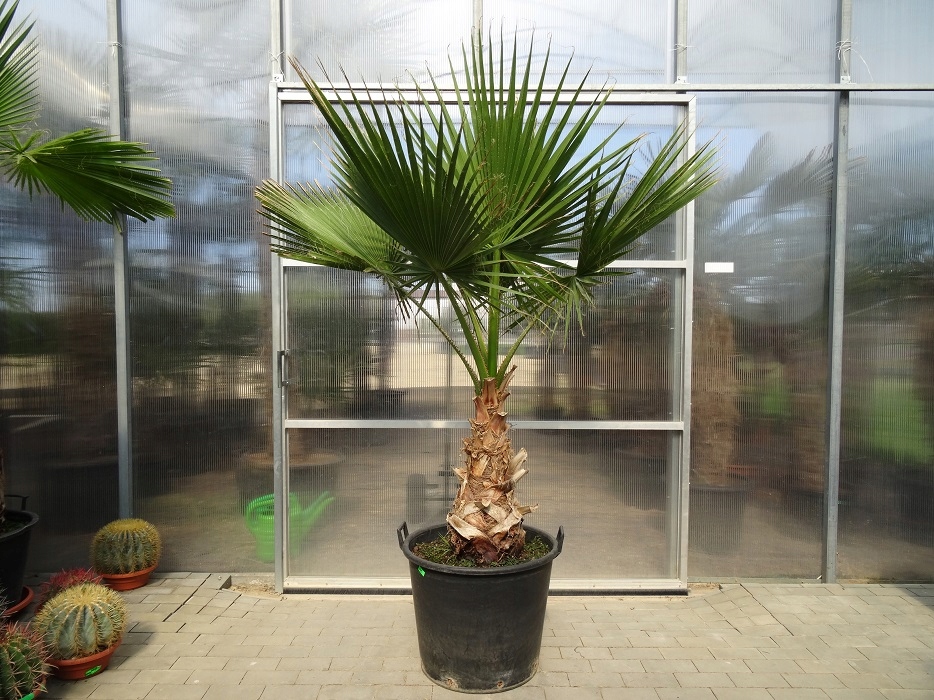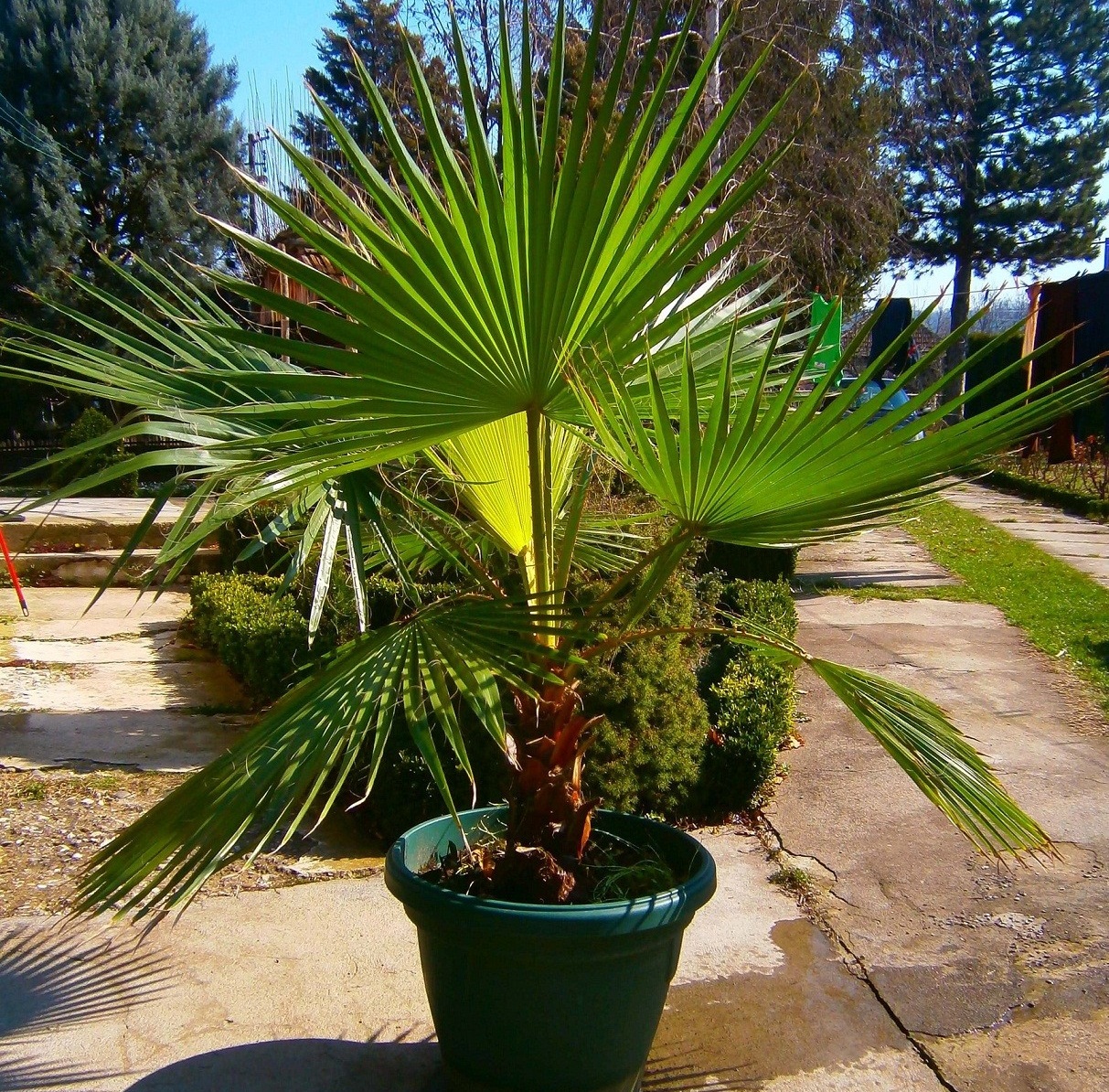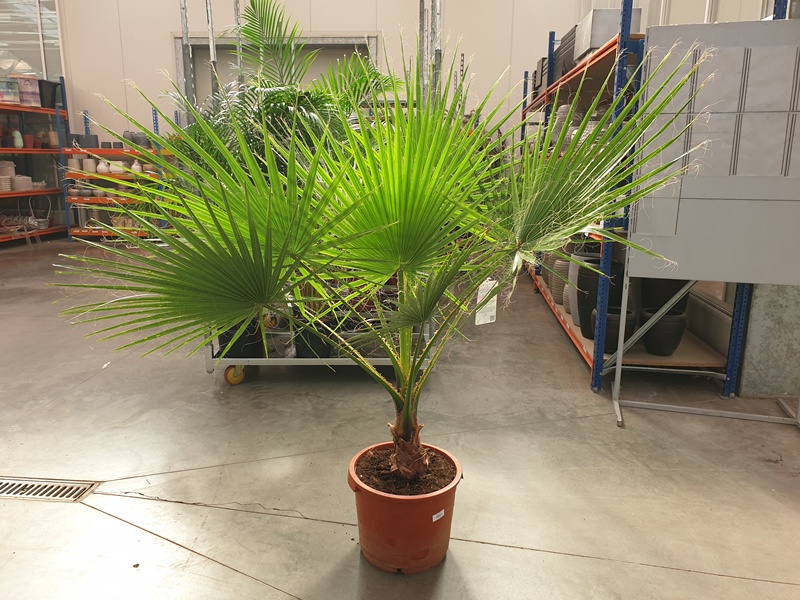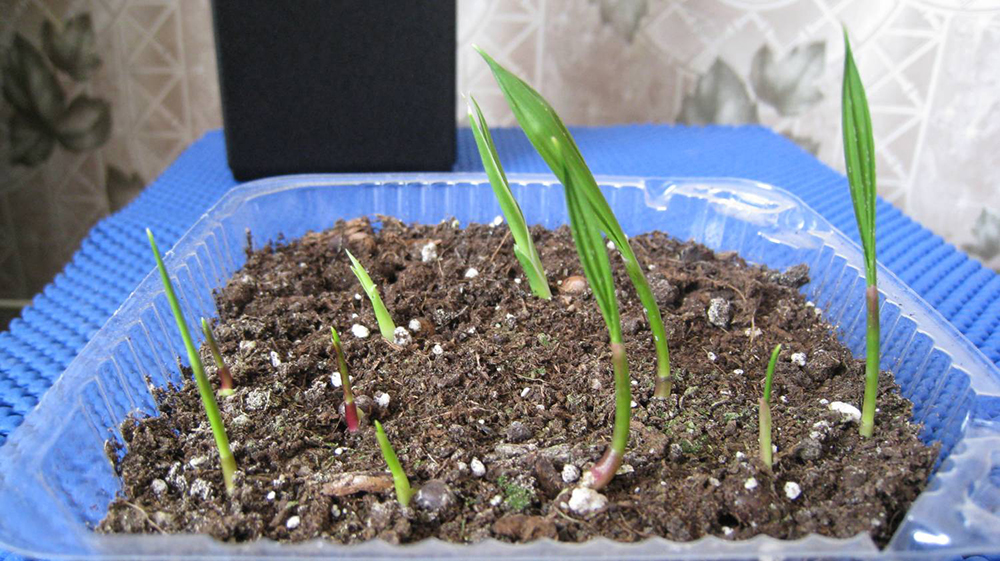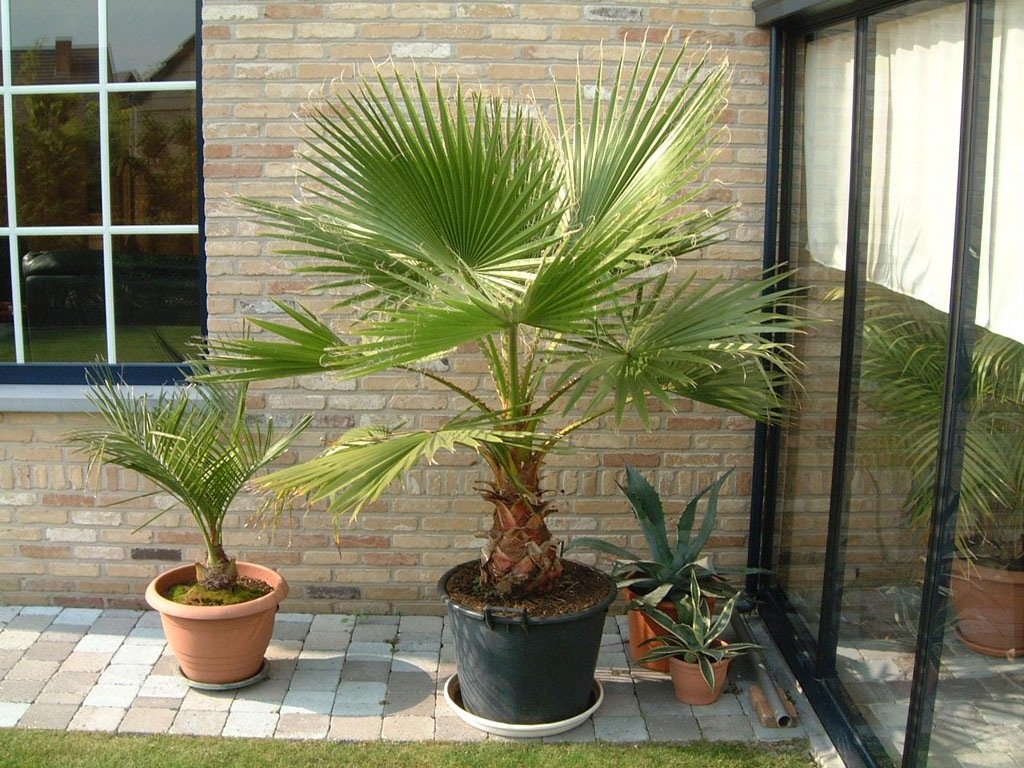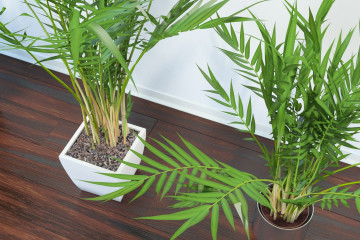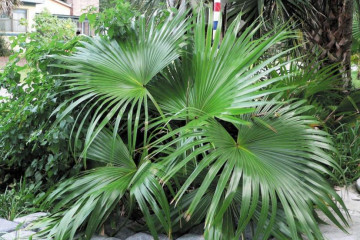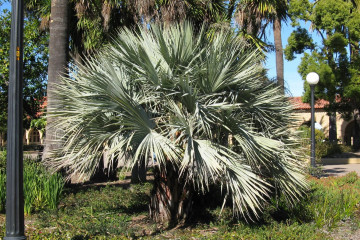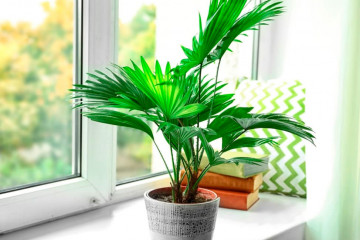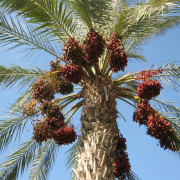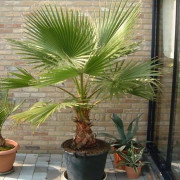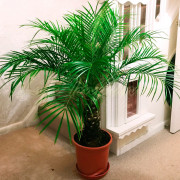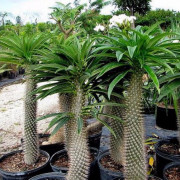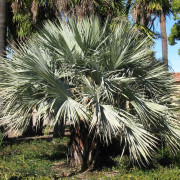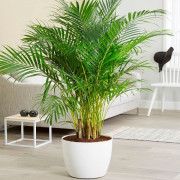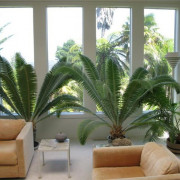Palm washingtonia - how to grow and care
Content:
Washingtonia palm is an ornamental deciduous plant that came to the country from hot countries. Although in natural conditions it grows to an incredibly large size of 25 meters, dwarf varieties and varieties are grown in indoor conditions.
Palm washingtonia - what is this flower
The Washingtonia palm tree naturally grows in Mexico and the southern states of the United States. The plant was named after the very first president of America, George Washington.
Washingtonia is a single-stemmed upright tree. The bark of the trunk is usually gray in color. Scales are located along the entire surface of the branches, which are much larger in size closer to the base than at the top.
The top of the palm tree is decorated with a crown made of decorative fan leaves. Their long, narrow and pointed segments have a yellow edging.
Varieties of home flower
The genus Washingtonia palm is presented only in 2 types: strong or robusta and filamentous or filamentous.
Washingtonia filifera
Washingtonia filamentary grows in the US states of Colorado and California.
- The height of the palm is about 25 meters, the diameter of the trunk can reach one meter.
- Adult specimens form adventitious roots at the base of the shoots, with the help of which the plant can be propagated.
- Washingtonia filamentous has long leaf plates that extend up to 4 meters. Their color has a slightly grayish tint.
Washingtonia robusta
Washingtonia robusta or strong, in Russia also known as powerful. This is a tall tree 30 meters in diameter, the trunk of which is 50-70 centimeters in diameter.
A bunch of decorative leaves is located at the very top of the tree. In an adult palm, the number of leaf plates can reach 50 pieces. The length of one leaf reaches 2.5 meters, and it consists of light green long segments of an oval shape.
The homeland of the strong are the territories of the state of Arizona, California and Florida, especially the district of Miami.
Caring for a palm tree at home
When it comes to the washingtonia palm tree, they say that home care is not difficult. Even a novice florist can carry out all events without any problems.
Illumination and temperature conditions
Despite the general opinion about the photophilousness of palm trees, Washington does not need excessive illumination. Diffused light is best suited for growing this decorative tree. But the daylight hours should try not to reduce to values less than 16 hours. In indoor conditions, Washingtonia should be kept on the eastern or western windowsills.
On cloudy days, it is advisable to take care of additional lighting of the palm tree. For this purpose, it is recommended to purchase special fluorescent lamps.
The optimal temperature at which the plant should be grown indoors is 20-24 degrees. If the summer is very hot, you should take care of airing the bush and reducing the temperature in the room.
Watering rules and humidity
It is necessary to water the palm tree only when the top layer of the soil dries up, otherwise, excess liquid may stagnate in the soil. But even the soil in the pot should not be brought to excessive drying out.
- It is very harmful to use chlorinated tap water for irrigation; it is better to worry about its settling in advance.
- During the dormant period, it is better to water the plants with a very small amount of water 2-3 times a week, so the clods of earth will not have time to dry out.
- After watering, it is good for the health of the bush to loosen the ground.
Since Washington naturally grows in a subtropical climate, it is very important to maintain high air humidity in the room. To this end, it is recommended to spray the plant daily with a spray bottle, and wipe the leaf plates with a damp soft sponge.
Top dressing and soil quality
Like any other deciduous plant, Washingtonia needs to be fertilized with preparations that contain a large amount of iron. Otherwise, the wood plates will lose their beautiful appearance and turn yellow. It is recommended to feed the palm tree twice a month with ready-made complex fertilizers. In addition to iron, they must contain a certain amount of nitrogen, potassium and phosphorus.
The soil must always be loose, so it is worth mixing the planting substrate with river sand. In addition, when transplanting a tree into a different soil and pot, it is necessary to introduce organic matter: humus, compost rotted manure.
Flower container size
A palm tree is a tall plant with a heavy crown at the very top, so you should not plant it in light, tall and narrow pots, otherwise it will turn over. A good option would be not plastic, but large and wide ceramic or clay containers.
Pruning and replanting
Like many deciduous plants, the washington palm tree requires timely removal of yellowed and dried segments on the leaf plates. In the thread-like variety, you need to cut off the whole sheet and treat the damaged areas with a solution of potassium permanganate.
Pruning washingtonia for the purpose of crown formation is not required, however, sanitary procedures are recommended annually after the plant wakes up from hibernation.
The transplant is carried out only when absolutely necessary, since Washingtonia does not tolerate this procedure well. After it, it is difficult for the bush to take root in the new soil, therefore, for some time its growth may slow down, and during this period the palm is more vulnerable to the appearance of diseases.
In the first 4-6 years, it is recommended to transplant every 2 years, as the plant grows and the capacity will become small.
Flowering and dormant period of the plant
Washingtonia blooms with large paniculate inflorescences that can reach a diameter of 2-3 meters. The plant's three-lobed buds are usually shaped like goblets.
After flowering, in place of flowers, black fruits appear 2 centimeters long, similar to ordinary berries.
Palm propagation washingtonia
Growing filamentous and strong from washingtonia seeds is the most convenient and common method in home floriculture. It will not be possible to propagate it using vegetative methods, since the tree forms only one trunk, which makes it impossible to cut cuttings.
In autumn, after flowering, you need to collect the seeds from the fruits of the bush and put them in storage. Washingtonia seeds will grow healthy if they are placed in a special strengthening solution before sowing in spring. You need to plant seeds in a moistened nutrient substrate.
The seeding box must be covered with plastic wrap and placed in a bright place in the house. After the first shoots appear, it is necessary to periodically ventilate them and moisten the soil from a spray bottle.
Growing problems, diseases and pests
If you do not care for the palm tree or make mistakes in care, problems in cultivation can arise, as well as diseases and pests.
Problems with growing Washington:
- The bush suffers from a lack of iron, as indicated by yellowed plates. In this case, it is recommended to spray its leaves and treat the soil with a solution of ferrous sulfate.
- Falling green foliage. Occurs due to dry indoor air.
From diseases, the shrub can be affected by root rot, the cause of which is stagnation of moisture in the soil. This can be prevented by regular loosening of the soil and proper watering. But if the disease has already appeared, it is necessary to transplant the tree into a new substrate and cut off the damaged areas.
Pests also often infect a palm tree, especially often it suffers from:
- mealybugs - whitish oval insects, leaving white mucus on the leaf plate;
- spiderworms - almost invisible black insects winding a thin web;
- scale insects - laying larvae on the back of the plates and sucking juices from them.
An amazingly beautiful deciduous ornamental plant washingtonia, which is very easy to care for at home, but it has some features. Following all the rules of cultivation, you can get a healthy home palm with a beautiful green crown.
